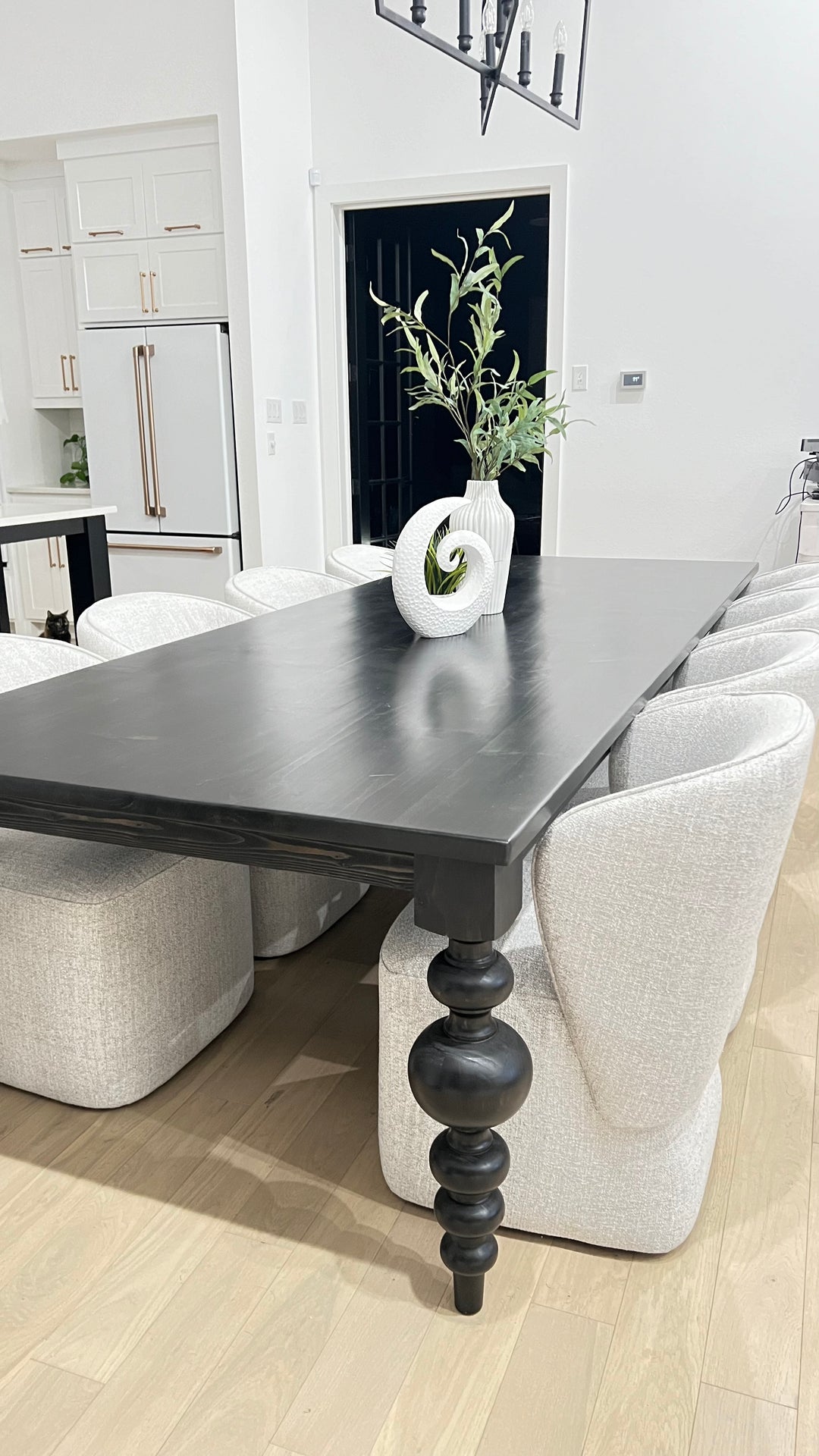From Standard to Modern: Locate the Ideal Dining Space Table Legs for Your Style
While timeless layouts such as cabriole and turned legs evoke a feeling of classic refinement, contemporary styles like barrette and geometric options present a chance for striking aesthetic passion. As you think about these aspects, the concern remains: exactly how can you perfectly integrate these diverse leg styles to produce an unified dining experience?
Recognizing Table Leg Styles
The selection of dining-room table leg styles can considerably affect both the aesthetics and capability of the area. Each leg style contributes one-of-a-kind functional functions and aesthetic components, catering to varied style choices and usage demands. Comprehending these designs is crucial for selecting the right table that aligns with your total interior decoration vision.
As an example, tapered legs use a clean, timeless appearance that can enhance a space's beauty, while stand bases offer stability and take full advantage of legroom, making them optimal for smaller rooms. Hairpin legs, a characteristic of mid-century modern-day layout, introduce an industrial style, allowing for a ventilated, open feeling. Trestle legs evoke rustic charm, providing robust support and a sense of eternity.
Furthermore, the choice of materials plays a substantial duty. Wood legs can bring warmth and appearance, whereas steel alternatives usually share a sleek, contemporary ambiance. Eventually, comprehending table leg styles is important for developing a natural eating area that shows individual design while ensuring practicality and comfort. By attentively thinking about these components, you can boost both the practical and visual charm of your eating space.
Typical Table Leg Options
When picking dining-room table legs, typical alternatives typically embody classic elegance and craftsmanship. These layouts mirror a rich heritage and a commitment to quality, making them excellent for those that appreciate timeless looks.
One of the most legendary standard leg designs is the cabriole leg, characterized by its elegant curved form. This design often includes attractive makings and is most generally discovered in Queen Anne and Chippendale furnishings. Another preferred alternative is the transformed leg, which boasts a series of smooth, rounded shapes that give a classic look while keeping stability.
Furthermore, the straight leg, while simple, uses a tough and unadorned framework that can blend flawlessly with a variety of tabletop designs. For those attracted to ornate describing, claw-and-ball feet legs stimulate a sense of majesty and can act as a spectacular centerpiece in any type of eating room.
Lastly, pedestal bases, although not strictly legs, offer a different standard option that enables sufficient legroom and can be perfectly carved. Each of these standard leg styles adds to the total ambiance of an eating space, weding function with visual appeal.

Modern Table Leg Designs
Modern table leg layouts offer a varied variety of designs that emphasize innovative products and clean lines. These styles usually prioritize functionality while offering as striking focal factors within an eating space. Minimalist appearances prevail, with legs crafted from products such as steel, glass, and crafted wood, which add to a ventilated and modern feeling.
One prominent layout is the barrette leg, defined by its slim, tapered structure that offers stability without overwhelming the tabletop (dining room table legs). This design is often found in mid-century contemporary furnishings and can easily match different table forms. One more pattern is the usage of geometric forms, where legs might tackle angular or asymmetrical types, including visual rate of interest and a touch of artistry

Mixing Designs for One-of-a-kind Areas
Commonly, homeowners look for to develop unique eating areas that reflect their individual design by mixing different design components. This method allows for the consolidation of diverse aesthetic appeals, resulting in a harmonious yet distinctive setting. For example, matching a rustic wooden table with sleek, modern-day steel legs can develop an appealing contrast that boosts the room's overall appeal.
In addition, integrating vintage table legs with contemporary table tops can stimulate a feeling of background while maintaining a modern-day perceptiveness. Such combinations not just showcase private preference but also urge creativity, enabling homeowners to curate a space that really feels both individual and welcoming.
Shade plays a crucial role in this mixing process; picking table legs that enhance or contrast with the existing color pattern can boost visual interest. For example, whitewashed legs can soften the boldness of a dark table surface, creating a balanced visual.
Tips for Selecting the Right Legs
Choosing the right table legs is useful site crucial for accomplishing both capability go now and aesthetic appeal in your eating room. Begin by thinking about the total style of your room. Typical setups take advantage of legs that feature intricate makings or transformed layouts, while contemporary spaces might call for sleek, minimal designs.
Following, analyze the elevation and stability of the legs. dining room table legs. Standard table range between 28 to 30 inches in height, so guarantee the legs enhance this dimension for convenience. Additionally, durable products, such as hardwood or metal, can boost security and durability
Review the leg form too-- alternatives include directly, tapered, or stand layouts. Straight legs use a traditional look, while tapered legs can include a touch of beauty. Pedestal bases provide sufficient legroom and are optimal for smaller sized areas.
Verdict
In summary, picking the optimal eating space table legs requires cautious consideration of both modern and standard designs. By balancing leg design, height, and product with the total decor, a cohesive and welcoming environment can be accomplished.
The selection of eating space table leg designs can significantly affect both the aesthetics and performance of the space. Inevitably, understanding table leg styles is essential for creating a cohesive eating area that shows personal style while making certain usefulness and comfort.One of the most legendary standard i thought about this leg styles is the cabriole leg, identified by its stylish bent shape. Straight legs provide a classic look, while tapered legs can add a touch of elegance.In summary, choosing the suitable dining area table legs requires mindful consideration of both modern and conventional designs.